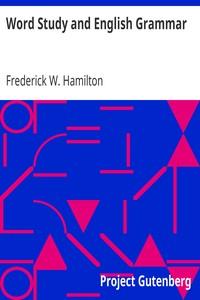|
|
Read this ebook for free! No credit card needed, absolutely nothing to pay.Words: 13392 in 6 pages
This is an ebook sharing website. You can read the uploaded ebooks for free here. No credit cards needed, nothing to pay. If you want to own a digital copy of the ebook, or want to read offline with your favorite ebook-reader, then you can choose to buy and download the ebook.

: Medical Investigation in Seventeenth Century England Papers Read at a Clark Library Seminar October 14 1967 by Bodemer Charles W King Lester S Lester Snow - Boyle Robert 1627-1691; Embryology England History 17th century@FreeBooksWed 07 Jun, 2023 verything else they agree; they are both alike primordially vegetables, potentially they are animals. Let thy Studies be free as thy Thoughts and Contemplations, but fly not only upon the wings of Imagination; Joyn Sense unto Reason, and Experiment unto Speculation, and so give life unto Embryon Truths, and Verities yet in their Chaos. Browne greatly admired Harvey's work on generation, considering it "that excellent discourse ... So strongly erected upon the two great pillars of truth, experience and solid reason." Browne carried out a variety of studies upon animals of all kinds, in them joining Sense unto Reason, and "Experiment unto Speculation." Thus in his studies of generation, he made observations and also performed certain simple chemical experiments. Noting that "Naturall bodyes doe variously discover themselves by congelation," Browne studied experimentally the chemical properties of those substances providing the raw material of development. He observed the effects of such agents as heat and cold, oil, vinegar, and saltpeter upon eggs of various animals, recording such facts as the following: To affirm that Sir Thomas Browne was the founder of chemical embryology or, indeed, to contend that he made a great impress upon the progress of embryology is to humour our fancy. As Browne himself reminds us, "a good cause needs not to be patron'd by a passion." His work and interpretations of generation are most important for our purposes as an indication of the rising mood of the times and an emerging awareness of the physiochemical analysis of biological systems. Although this mood and awareness coexist in Browne's writings with a continued reverence for some traditional attitudes, they mark a point of departure toward a variety of embryological thought prominent in England during the second half of the seventeenth century. Needham's book contains many splendid observations, including an accurate description of the placenta and its vessels, the relationship of the various fetal membranes to the embryonic fluids, and rather complete directions for dissection of various mammals. These need not detain us, since the important aspect of Needham's work relevant to our purpose is his continuation of the chemical analysis of the developing embryo and its demonstration that, although Harvey might have despised the "chymists" and been contemptuous of the "mechanical, corpuscular philosophy," this system and approach was not to be denied. It is very probable that the spermatic portions of the uterus and its carunculae are naturally suited for separating aerial particles from arterial blood. These observations premised, we maintain that the blood of the embryo, conveyed by the umbilical arteries to the placenta or uterine carunculae transports to the foetus not only nutritious juice, but also a portion of the nitro-aerial particles: so that the blood of the infant seems to be impregnated with nitro-aerial particles by its circulation through the umbilical vessels in the same manner as in the pulmonary vessels. Therefore, I think that the placenta should no longer be called a uterine liver, but rather a uterine lung. The studies of such individuals as John Standard reporting the weight of various parts of the hen's egg, e.g., the shell, the yolk, the white, reveal the wing of embryological investigation that was increasingly obsessed with quantification and the physicochemical analysis of the embryo and its vital functions. In this they were following the injunction of Boyle, who used the developing embryo as a vehicle in an attack upon the idea that mixed bodies are compounded of three principles, the obscurities of which operated to discourage quantification: How will this hypothesis teach us, how a chick is formed in the egg, or how the seminal principles of mint, pompions, and other vegetables ... can fashion water into various plants, each of them endowed with its peculiar and determinate shape, and with divers specifick and discriminating qualities? How does this hypothesis shew us, how much salt, how much sulphur, and how much mercury must be taken to make a chick or a pompion? And if we know that, what principle it is, that manages these ingredients, and contrives, for instance, such liquors, as the white and yolk of an egg into such a variety of textures, as is requisite to fashion the bones, veins, arteries, nerves, tendons, feathers, blood, and other parts of a chick? and not only to fashion each limb, but to connect them all together, after that manner, that is most congruous to the perfection of the animal, which is to consist of them? LESTER S. KING Robert Boyle was not a physician. To be sure, he had engaged in some casual anatomical studies, but he had not formally studied medicine and did not have a medical degree. Nevertheless, he engaged in what we would call medical practice as well as medical research and exerted a strong influence on the course of medicine during the latter seventeenth century, an influence prolonged well into the eighteenth. He lived during the period of exciting yet painful transition when medical theory and practice were undergoing a complete transformation towards what we may call the "early modern" form. The transition, naturally gradual, extended over three centuries, but I wish to examine only a very small fragment of this period, namely, the third quarter of the seventeenth century. Boyle seems to have acquired most of his medical knowledge between, say, 1649 and 1662. It is worth recalling some of the trends and conflicts that formed the medical environment during this period. Among the major trends, first place, perhaps, must be given to Galenic doctrine, which had come under progressively severe attack. Moli?re, who lived from 1622 to 1673, showed in his comedies the popular reaction to a system which, although dominant, was clearly crumbling. The cracks in the edifice even the layman could readily see. Nevertheless, Galenism had its strong supporters. Riverius, who lived from 1589 to 1655, was a staunch Galenist. An edition of his basic and clinical works was translated into English in 1657, and Latin editions continued to be published well into the eighteenth century. Free books android app tbrJar TBR JAR Read Free books online gutenberg More posts by @FreeBooks
: Stopover Planet by Gilbert Robert E Terry W E Illustrator - Science fiction; Short stories Science Fiction@FreeBooksWed 07 Jun, 2023

: Native Son by Hamm T D - Science fiction; Short stories Science Fiction; Science Fiction by Women@FreeBooksWed 07 Jun, 2023
|
Terms of Use Stock Market News! © gutenberg.org.in2025 All Rights reserved.






